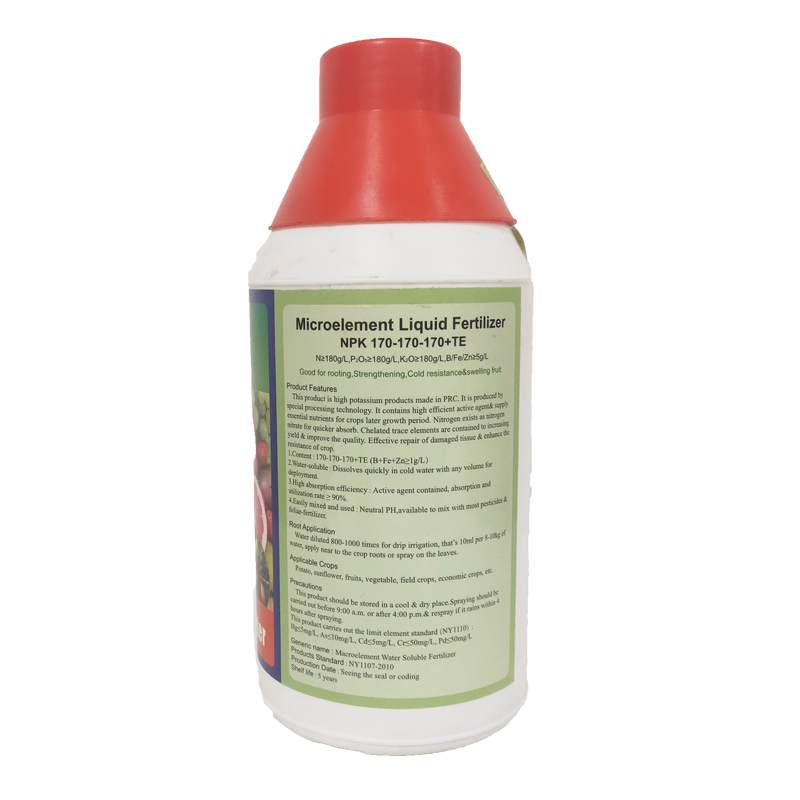
Sep . 27, 2024 05:41 Back to list
humic substance
The Importance and Role of Humic Substances in Soil and Environmental Health
Humic substances are complex organic compounds formed through the microbial decomposition of organic matter. They play a crucial role in soil chemistry and fertility, and their significance extends beyond mere soil enhancement to broader environmental health. Understanding humic substances can reveal their critical contributions to agriculture, ecosystem functions, and even pollution remediation.
Definition and Composition
Humic substances primarily consist of humic acid, fulvic acid, and humin. Humic acid is soluble in alkaline solutions but precipitates when the solution is acidified, while fulvic acid remains soluble at all pH levels. Humin is the fraction that is insoluble in both acidic and alkaline conditions. These substances are originated from decaying plant and animal materials, where microbes break down complex organic molecules into smaller components. The intricate structure of humic substances allows them to interact effectively with minerals and other organic compounds in the environment.
Soil Fertility and Plant Growth
One of the key roles of humic substances is enhancing soil fertility. They improve soil structure, increase water retention, and promote aeration, creating a more conducive environment for plant roots. The presence of humic substances increases the cation exchange capacity (CEC) of soil, which means that soils can hold onto essential nutrients like potassium, calcium, and magnesium more effectively. This increased nutrient retention leads to improved plant growth and agricultural productivity. Moreover, humic substances can stimulate plant enzyme activities, contributing to better nutrient uptake and overall plant health.
Environmental Benefits
The benefits of humic substances extend to environmental health as well. They play a significant role in carbon sequestration, a critical process for mitigating climate change. By stabilizing organic carbon in soil, humic substances prevent its release into the atmosphere as carbon dioxide. This is essential in addressing global warming and promoting sustainable agricultural practices.
humic substance

Additionally, humic substances can binds with heavy metals and other pollutants, reducing their bioavailability and toxicity in the environment. This property makes them valuable in remediation efforts, helping to clean contaminated soils and waters. By sequestering harmful substances, humic substances help restore ecosystems impacted by human activities, promoting biodiversity and healthier habitats.
Impact on Microbial Activity
Humic substances also influence microbial activity in the soil. They serve as a source of carbon and energy for soil microorganisms, supporting diverse microbial communities. A healthy microbial population is essential for nutrient cycling, organic matter decomposition, and disease suppression. The interactions between humic substances and microorganisms lead to enhanced soil health and resilience against pathogens.
Application in Agriculture
Farmers and agronomists are increasingly recognizing the importance of humic substances in sustainable agriculture. The application of humic substances as soil amendments can lead to more efficient use of fertilizers, reducing costs and decreasing the risk of nutrient runoff into waterways. Moreover, organic farming practices that enhance humic substance levels can improve soil biodiversity and fertility over the long term.
Innovative agricultural practices, such as integrating cover crops and composting, contribute to the accumulation of humic substances in the soil. These practices not only build soil health but also promote resilience against the adverse effects of climate change, such as drought and extreme weather events.
Conclusion
In summary, humic substances are indispensable components of healthy soils and ecosystems. Their multifaceted roles encompass improving soil fertility, enhancing environmental quality, promoting microbial activity, and facilitating agricultural sustainability. As challenges such as soil degradation and climate change pose significant threats to global food security and environmental health, the understanding and application of humic substances provide a promising pathway toward more resilient and sustainable agricultural systems. Continued research and innovation in this field are essential for unlocking the full potential of humic substances in addressing the pressing environmental issues of our time.
-
Premium Organic Manure Compost for Eco Gardens
NewsAug.01,2025
-
Organic 10-10-10 Fertilizer | Balanced Plant Nutrients
NewsJul.31,2025
-
Premium Amino Acid Fertilizer | Rapid Plant Growth Booster
NewsJul.31,2025
-
10 10 10 Fertilizer Organic—Balanced NPK for All Plants
NewsJul.30,2025
-
Premium 10 10 10 Fertilizer Organic for Balanced Plant Growth
NewsJul.29,2025
-
Premium 10 10 10 Fertilizer Organic for Balanced Plant Growth
NewsJul.29,2025
